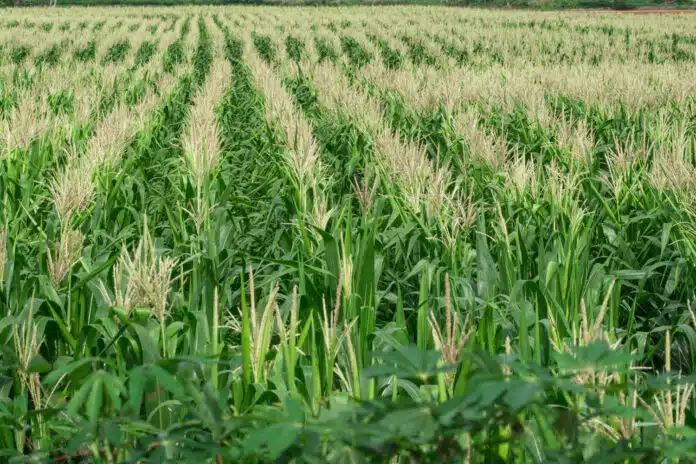
By Ashwini Sakharkar 17 Sep, 2024
Collected at: https://www.techexplorist.com/critical-crops-alternative-way-survive-stressful-dry-conditions/89816/
Scientists have made a groundbreaking discovery about how certain plants can thrive in stressful, dry conditions. They have found that maize, sorghum, and proso millet have the remarkable ability to control water loss through their leaves without relying on their usual mechanism of tiny pores known as ‘stomata.’
This nonstomatal control of transpiration gives these plants an advantage in creating a favorable microclimate for photosynthesis within their leaves.
As a result, these plants can continue to absorb carbon dioxide for growth and photosynthesis even in challenging environmental conditions without increasing their water expenditure. This discovery has significant implications for global food security and agricultural sustainability.
In PNAS, researchers from the University of Birmingham, Australian National University, Canberra, and James Cook University, Cairns, present groundbreaking findings challenging the long-held belief that stomata alone control leaf water loss in plants under stressful and dry growing conditions.
“This revolutionized our understanding of plant-water relations by showing that nonstomatal control of transpiration limits water loss without compromising carbon gain—challenging what is typically accepted as an unavoidable trade-off,” commented co-author Dr. Diego Márquez, from the University of Birmingham.
“Our findings have significant implications for plant adaptation to climate change and how crops might be grown in arid environments. Understanding this mechanism could open new avenues for improving water-use efficiency in C4 crops, which are vital for global food security.”
The study has revealed that C4 plants can maintain reduced relative humidities in the substomatal cavity, even under vapor pressure deficit (VPD) stress, which helps minimize water loss. This highlights the crucial role of nonstomatal control in improving water-use efficiency.
This mechanism enables plants to sustain photosynthesis by reducing water loss without significantly lowering intercellular CO2 levels, which is essential for maintaining growth and ensuring the thriving of crops.
Furthermore, the findings suggest that nonstomatal control mechanisms may have evolved prior to the divergence of C3 and C4 photosynthetic pathways, indicating a shared evolutionary trait.
“Our research reframes understanding of water-use efficiency in C4 plants and reveals that this alternative mechanism helps plants continue to grow and capture carbon dioxide, even when atmospheric water demand is high, challenging traditional assumptions about how these plants survive droughts,” added Dr Márquez.
Photosynthesis is the incredible process by which plants harness light and carbon dioxide to produce sugars essential for their growth. This remarkable feat is made possible by an enzyme called Rubisco. As plants open their stomata to allow carbon dioxide to enter, they also release water vapor.
While C3 plants rely solely on CO2 diffusion through their stomata for carbon gain, C4 plants have evolved specialized leaf structures and enzymes to concentrate carbon dioxide around Rubisco, leading to enhanced photosynthetic performance and water-use efficiency.
However, this advantage comes with a trade-off, as C4 plants are susceptible to significant reductions in photosynthesis when their stomata close. Thus, the nonstomatal mechanism plays a crucial role in ensuring their success by controlling water loss while keeping stomata open.

Leave a Reply